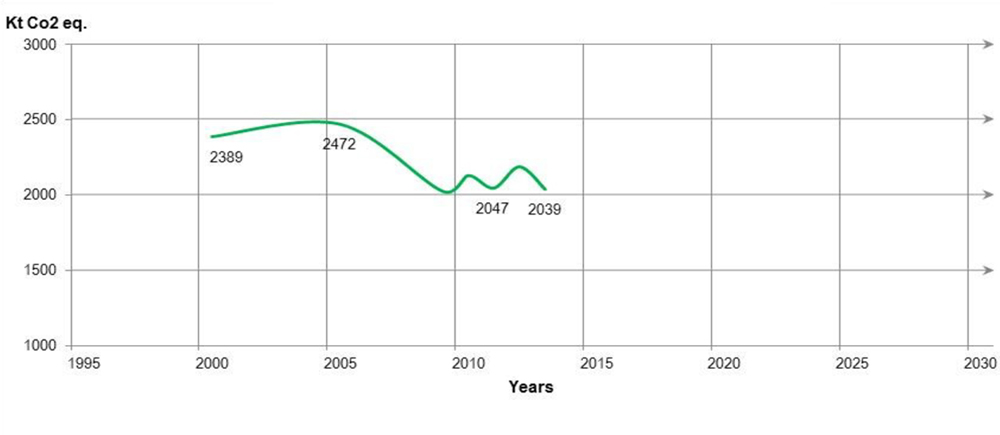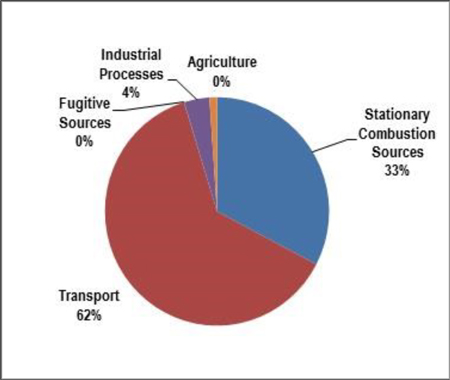Yukon: Environment profile
Note
This information was current as of November 2015.

Yukon (YT) in brief
- Premier:
- Hon. Darrell Pasloski (Yukon Party)
- Population:
- 36,500 (2014)
- Total Area:
-
482,443 km
2
- Land:
- 474,391 km 2
- Freshwater:
- 8,052 km 2
- Real GDP (gross domestic product) 2013:
- $2.3 billion (in 2007 dollars)
- Contribution to real Canadian GDP 2013:
- 0.1%
YT Budget 2015-16
- Budgeted total expenditures:
- $1.25 billion
- Funds Allocated for the MoD:
-
$41.2 million
- 3.3% of total budget
- 5.7% increase from 2014-2015 budget
Key Environmental Federal-Provincial Agreements
- Canada-Yukon Agreement Environmental Occurrences Notification Agreement
- Canada-Yukon Agreement on Environmental Assessment Cooperation
- Draft Memorandum of Agreement for Canada-Yukon Water Quality and Aquatic Ecosystem Monitoring and Reporting
- Federal-Yukon Hydrometric Monitoring Agreement
- 11 of 14 First Nations Land Claim Final Agreements have been signed under the Yukon Umbrella Final Agreement
Climate change
- Department responsible for climate change:
- Department of Environment and Climate Change Secretariat
- Minister responsible for climate change:
- Hon. Wade Istchenko
- Legislation and regulations:
- Yukon Environment Act, Air Emission Regulations, Regulations on Ozone Depleting Substances and Other Halocarbons. Guidelines on wood burning stove emissions are also in place across the territory.
Territories’ Collectives GHG (greenhouse gas) emissions

Sources:
- National Inventory Report (2015)
Long description
Figure 1 is representative of all three territories’ (Nunavut, Yukon and Northwest Territories) collective GHG emissions. The graph presents a single time series line graph with the horizontal axis spanning the years 1995 to 2030 in five year increments. The vertical axis is Kt CO2 eq and spans the value of 1000 to 3000 in increments of 500. The starting value in 2001 is 2389 Kt, increasing to 2472 Kt in 2005. It declines to 2047 Kt in 2011 and 2039 Kt in 2013. The territorial 2020 and 2030 targets are not noted.
Territorial GHG emissions reduction target
- Cap Emissions of government operations by 2010
- Emissions of government 20% below 2010 levels by 2015.
- Government aims to be Carbon Neutral by 2020
- Yukon has not established a territory-wide emission target
YK's sources of GHG emissions, 2013

Source: National Inventory Report, 2015
Long description
Figure 2 presents a pie chart of the distribution of major greenhouse gas sources in Yukon.
- Stationary combustion sources: 33%
- Transport: 62%
- Fugitive sources: 0%
- Industrial processes: 4%
- Agriculture : 0%
- Climate Change Strategies: Climate Change Action Plan (2009)
- Total YT Emissions, 2013: 358 Kt (Source: Environment Canada’s National Inventory Report, 2015)
- YT’s Contribution to total Canadian GHG Emissions, 2013: 0.05%
- Ranked the 2nd lowest GHG emitter amongst Canadian provinces and territories in 2013.
- GHG per Capita, 2012: 17.9 tonnes (all territories combined); ranked 5th highest GHG emitter per Capita, 2012 (Emissions Trends Report, 2014)
- The 2009 Climate Action Plan created the Climate Change Secretariat and set targets that apply only to government operations. The government committed to report emissions to the Climate Registry.
- The Government also adopted 11 specific targets in 5 economic sectors (building, transportation, electricity, industrial operations, government operations).
- In April 2011, the Government of Yukon, along with those of Nunavut and the Northwest Territories, released the Pan-territorial Adaptation Strategy to ensure partnership, sharing of information, innovation, and technology, and coordination of climate change adaptation actions.
- Yukon released an Energy Strategy in January 2009 with some initiatives related to climate change including increasing renewable energy generation and increasing energy efficiency by 20% by year 2020.
Water
- Departments responsible for water:
- Department of Environment, Department of Health and Social Services
- Minister responsible for water:
- Hon. Wade Istchenko
- Legislation and regulations:
- Waters Act, Environment Act, Public Health and Safety Act, Yukon Environmental and Socio Economic Assessment Act, Regulatory Regime for Placer Mining, Drinking Water Regulation
- Water Strategy: Yukon Water Strategy and Action Plan (2014)
- Yukon Environment is responsible for developing water-related strategic plans and policies, enforces the Waters Act, reviewing project applications for water use and deposit of waste, monitoring groundwater sampling requirements for solid waste disposal sites, park planning and operations, and freshwater fish and fish habitat management.
- Other departments with water-related responsibilities include: Energy, Mines and Resources (protecting water resources in relation to mining); Community Services (water, sewage, flood and erosion control, and solid waste disposal projects for unincorporated communities, and advice and project assistance for municipalities and First Nations); Health and Social Services (drinking water); Executive Council Office (water licensing and supporting the Yukon Water Board); Highways and Public Works; and Economic Development.
- The broad goals of the Yukon Water Strategy are to: preserve water quality and quantity for aquatic and terrestrial health and ecosystem services and respect the intrinsic value of water; ensure accessible, safe and sufficient water for drinking and other purposes, including industrial, recreational, heritage, cultural and spiritual uses and values; and promote sustainable and wise use by water for communities and key business sectors.
- Priorities under the Yukon Water Strategy include: improve YT’s groundwater regime (including development of a regulatory framework); maintain/improve access to safe drinking water; promote the sustainable use of water; improve information sharing; improve water management programs; and plan for water needs.
- Other key water priorities include: contaminated mines, fish habitat management system for placer mining, hydroelectric development, Peel Watershed management, impact of climate change on water and glaciers, melting permafrost, and hydraulic fracturing.
EC and YT Collaboration on Water
- Mackenzie River Basin Board
- Water Quality Monitoring
- Water Survey and Canada-Yukon Agreement for Hydrometric Monitoring
Biodiversity and wildlife
- Department responsible for biodiversity and wildlife:
- Department of Environment
- Minister responsible for biodiversity and wildlife:
- Hon. Wade Istchenko
- Legislation:
- Environment Act, Lands Act, Parks and Land Certainty Act, Territorial Lands (Yukon) Act, Wildlife Act
- Biodiversity and Conservation Strategies: Wild Spaces and Protected Places: A Protected Areas Strategy (1998)
| Extirpated | Endangered | Threatened | Special Concern | |
|---|---|---|---|---|
| Total: 16 Source: Species at Risk Public Registry January 2015 |
0 | 3 | 7 | 6 |
- YT does not have a specific biodiversity strategy.
- Through the Yukon First Nations and Inuvialuit land claims process, many parcels of land have been identified as Special Management Areas in need of management and protection. Most of these Special Management Areas have been subsequently designated as a Territorial Park, Habitat Protection Area, National Park, or National Wildlife Area. A management plan is developed for each area or site to guide its management by territorial, federal, and/or First Nation governments, as well as other agencies or councils, depending on the area and jurisdiction.
- The principles of YT’s 1998 Protected Areas Strategy were enshrined in the 2002 Parks and Land Certainty Act.
- Percentage of freshwater and land protected in YT: 11.9% (Source: Canadian Environment Sustainability Indicators, 2013)
- Environment Canada maintains 1 protected area in YT, the Nisutlin River Delta National Wildlife Area, comprising over 5,000 hectares of YT’s protected lands and waters. Currently there are no Migratory Bird Sanctuaries in YT.
- YT celebrates Biodiversity Awareness Month every April, with approximately 10% of the population participating in biodiversity-related activities such as birding tours, family fishing days, lectures and presentations.
- In 2013, there were an estimated 86 alien plant taxa in YT , of which 20 are considered invasive with a potential impact. The 13 known alien animal species are not considered invasive.